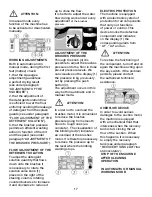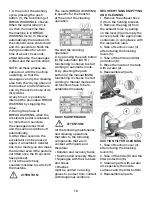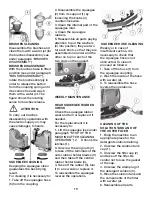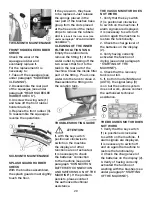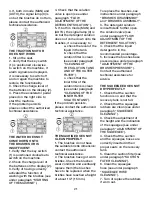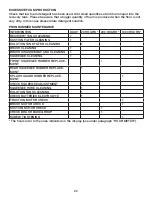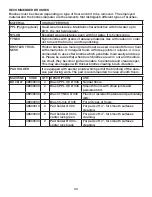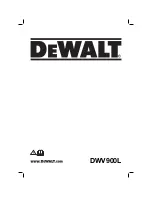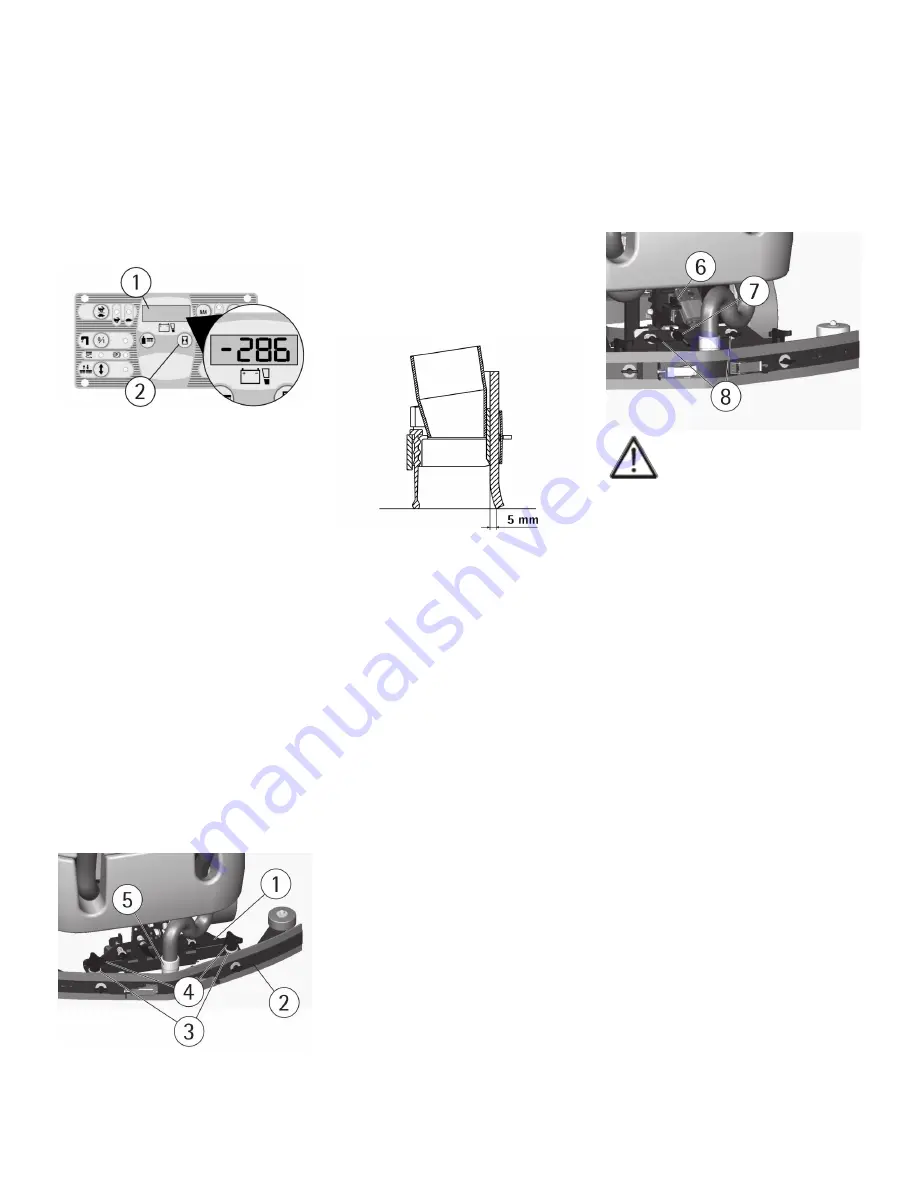
12
HOUR METER
The machine is equipped with
an hour meter located on the
same display (1) of the battery
charge level indicator. Keeping
the button (2) pressed, the first
data indicates the working
hours and after a few seconds
the working minutes are
shown.
In order to have a perfect
drying result through the
squeegee, the rear rubber
must have the lower bending
uniformly adjusted in all its
length. For the adjustment,
it is necessary to put the
machine in working condition
and the vacuum motor has
to be switched on and the
brushes have to function
together with the detergent
solution.
necessary to fix this optimum
condition making touch
slightly the wheels onto the
floor. Rotate the registers (8):
clockwise to lower the wheels
or counterclockwise to raise
them. Both wheels must be
adjusted in the same measure.
ATTENTION:
SQUEEGEE ASSEMBLY
1. Hold the squeegee support
(1) lifted from the floor.
2. Insert the threaded parts
of the two knobs (4) making
them slide inside the two slots
on the support placed on the
upper part of the squeegee (2).
3. Put the washers (3) into
position, there are two for
each knob, so that they are
assembled one under and the
other on top of the two slots
on the support.
4. Secure the squeegee by
rotating the two knobs (4)
clockwise.
5. Insert the squeegee hose (5)
into its coupling, as indicated
in the figure.
ADJUSTMENT OF THE
SQUEEGEE
The lower part of the rubber is
too much bent
Take off the pressure
rotating the wing nut (6)
counterclockwise.
The lower part of the rubber is
not much bent
Increase the pressure rotating
the wing nut (6) clockwise.
Check that the wheels which
adjust the height do not
rest on the floor, in this case
adjust them as indicated
in paragraph "Height
adjustment".
The bending is not uniform
Adjust the squeegee
inclination rotating
counterclockwise the wing nut
(7) to increase the bending in
the central part, or clockwise
to increase the bending on the
extremities.
Height adjustment
Once the pressure and
inclination of the squeegee
have been adjusted, it is
Every type of floor requires
a specific adjustment. For
example, concrete floors
(where the friction results to be
high) need little pressure, while
smooth floors (ceramics) need
higher pressure.
If the cleaning operations are
made always on the same type
of floor, the adjustment can
change only in function of the
rubber wear.
SPLASH GUARD ASSEMBLY
The two splash guards
have to be assembled onto
the brushes base group as
indicated in the following
figures. Insert the metal
strips inside the suitable slots
present on the rubber. Place
the round hole at the extremity
of the strip onto the pin (1)
placed in the front part of the
brushes base group. Secure
the strips through the nut
blocking it.

















